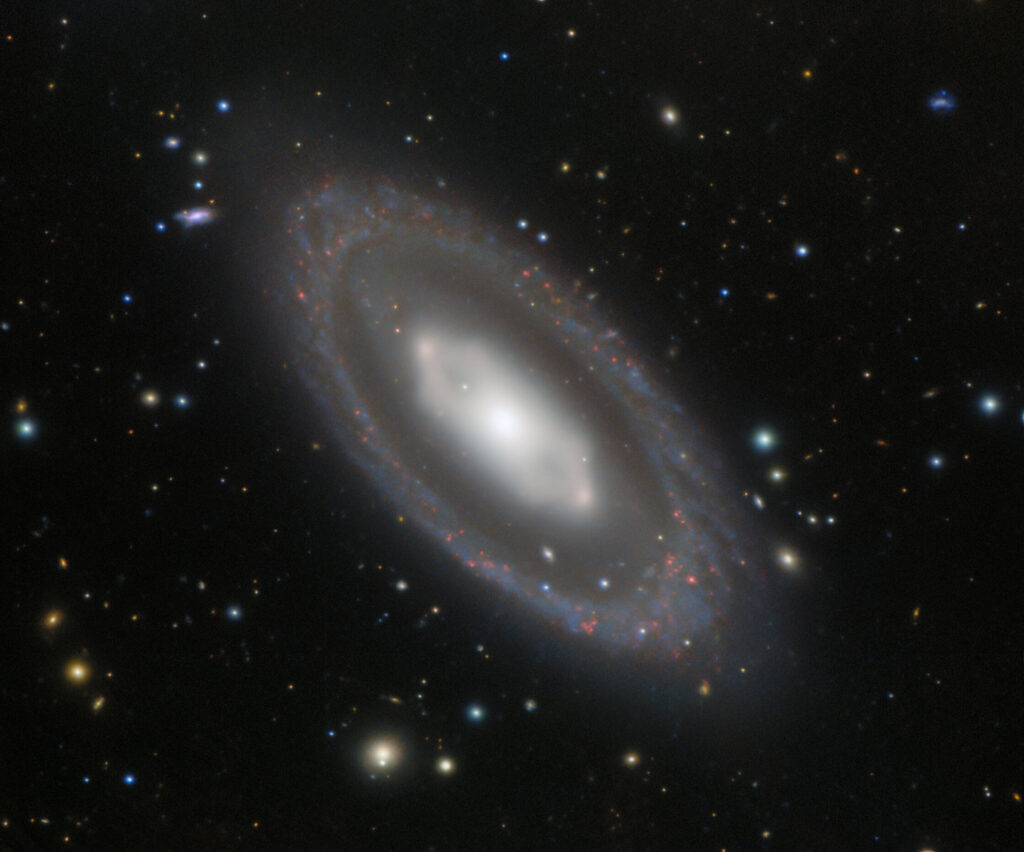The presented image was obtained by the Gemini South telescope located in Chile. It shows the galaxy NGC 7020, located at a distance of 138 million light-years from Earth in the direction of the constellation Pavo.

NGC 7020 is classified as a lenticular galaxy. According to astronomers, such objects represent a transitional link between spiral and elliptical galaxies. If the first actively produces new luminaries, the last have already lost this opportunity and are inhabited by old stars. Lenticular galaxies, as a rule, can still form new stars, but at a much slower rate. From the point of view of the structure, it is still possible to distinguish the galactic core and bulge in them, while the spiral structure is practically not noticeable.
The main distinguishing feature of NGC 7020 is its core, which has a very unusual hexagonal shape. To form such a structure, the orbits of the stars must lie in a very narrow band. According to one version, the NGC 7020 hexagon is the result of a very rare orbital resonance. However, the researchers do not exclude that we are talking about some as yet unknown phenomenon or process.
Recall that we recently wrote about how the Gemini South telescope photographed several dozen protoplanetary disks.
According to https://noirlab.edu
Follow us on Twitter to get the most interesting space news in time
https://twitter.com/ust_magazine

